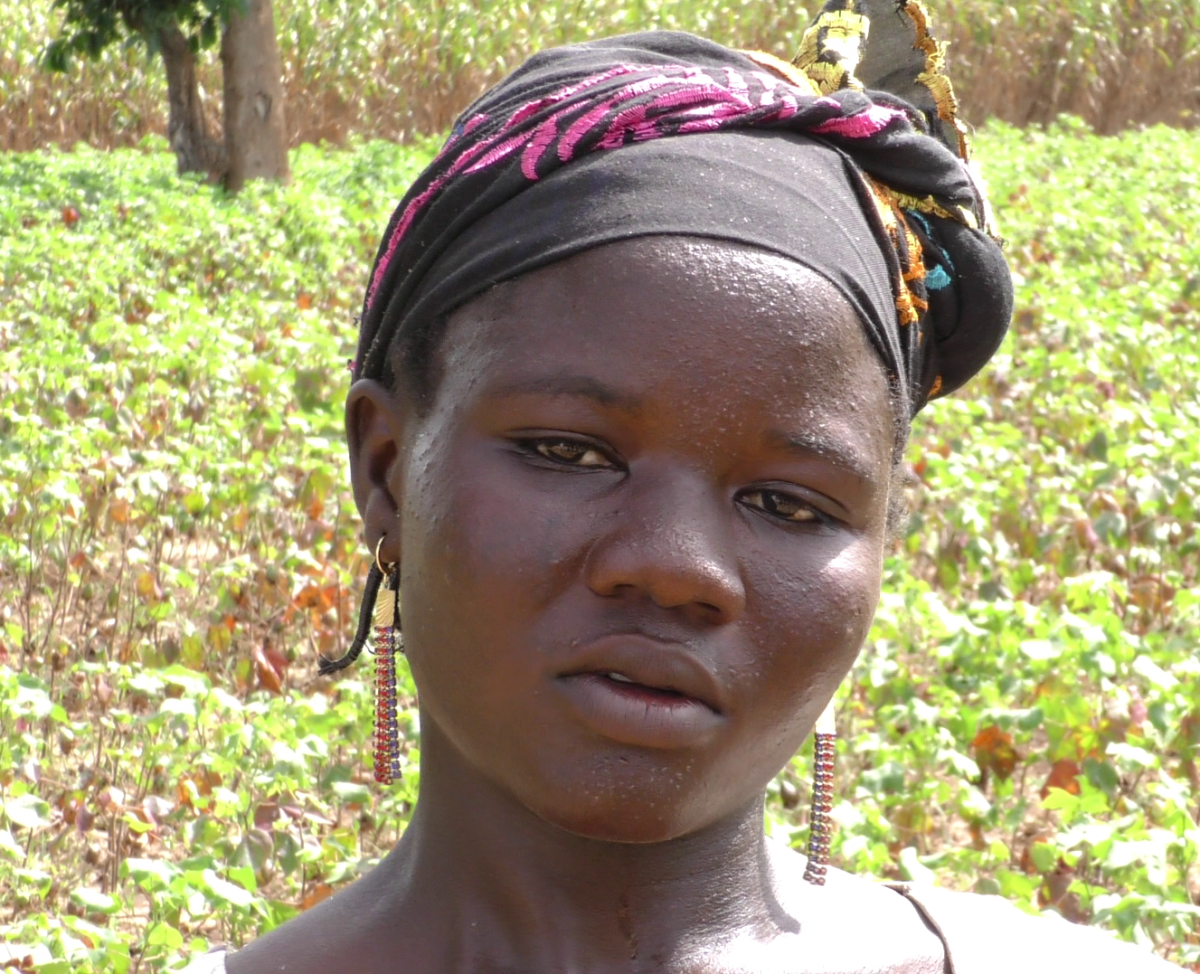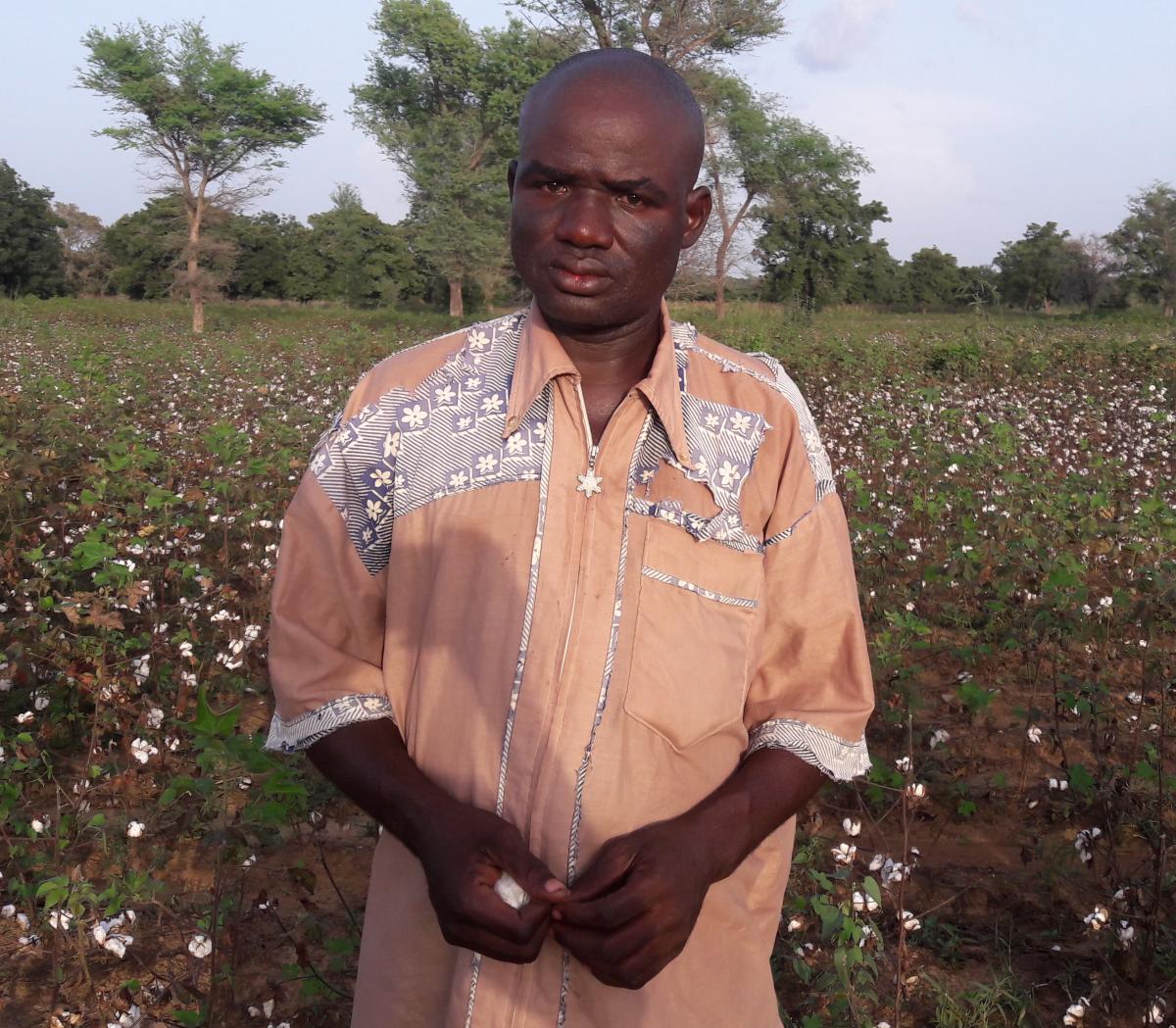Two years after Burkina Faso phased out growing genetically modified (Bt) cotton, the pressure of pest infestation on cotton fields has become so high that many farmers are convinced the industry will collapse soon unless something drastic is done.
They see themselves in a race against time, and say the government must either bring back GM cotton or introduce some other extraordinary technology.
“We keep advancing, then we backtrack”, noted cotton farmer Seidu Konatey. “This year, we won’t be able to get anything from the fields. If that happens again next year, then in the next two years, we will all be forced to abandon cotton production.”
“All farmers who have experience with Bt cotton are regretting the shift from Bt to conventional cotton but they are helpless and hope that the government will listen to their plea,” Francois Traore, president of the Union of Cotton Producers in Burkina Faso, said in an interview.
As a Ghanian reporter, I had the opportunity to travel across cotton fields in that beautiful country of about 20 million people with the most diverse of culture and extra-ordinary history. One thing was clear: the people are bold, optimistic about the future and extremely hardworking.
That probably explains why Burkina Faso was the first country in sub-Saharan Africa to commercialize GM seeds at a time when Africa was apprehensive about the technology, although it was graining ground across the world.
GM cotton was introduced in Burkina Faso in 2008 through a collaboration between the US agricultural firm Monsanto and Burkina state research scientists to curb the continuous destruction of cotton fields by pests. Seven years after its introduction, there was evidence that successes had been achieved in pest control, resulting in a 70 percent reduction in pesticide use. But the cotton trading companies and Burkinabe government put its continuous use on hold because the cotton being produced had shorter fiber length and could not be sold for premium price on the international market. So, for the last two years, farmers have been back to planting conventional cotton seeds.
All the farmers I met were adamant that it’s time to re-introduce Bt cotton. Kuraogo Salifu is a 65-year-old maize, sorghum, millet and cotton farmer at Diguima, in the Pandema District, who has five wives and 16 children. He says the decision to phase out GM cotton has increased pest attacks on his farm fields to unbearable limits. According to Salifu, he used to spray the cotton fields with pesticides four times every season. When GM cotton was introduced, that was reduced to two. But it has since shot up again to even higher levels.
“I have been cropping cotton for the last 30 years, but I have not seen anything like what I am seeing this year,” he said in an angry tone. “Since they brought this new variety two years ago, the pressure from the pest has been serious. We spray six-to-seven times a season. You spray today and return the following day to see more pests on the field.”
“If the government wants to help farmers, they need to bring back GM cotton,” he continued. “This year, we have increased the size of cotton fields all over but most of the fields are suffering from high pest attacks.”
The country will not achieve increased yields as expected, Salifu predicted.

Shekinatu Kuraogo. Photo by Joseph Opoku Gakpo
His 21-year-old wife, Shekinatu Kuraogo, is equally worried. She crops her own cotton field to raise money to invest in petty trading activities, and help her husband support their household. But she says earnings from her two-hectare cotton farm this year will be the lowest of her lifetime.
“The cotton fields would usually look far better than this,” Shekinatu lamented. “But the pest has destroyed them. The leaves are usually greener, but that is not the case this time around. When we were cropping GM cotton, we were harvesting early. But this one, there are no leaves even five months after planting and no fiber, although they have matured. I prefer GM seeds to this one.”
More than five hours drive away at Lamfirakura in the Dande District, I met Abdul Aziz Giro, a 51-year-old farmer with two wives and 13 children.
“We are supposed to spray six times, but now we have sprayed 10 times. We are supposed to harvest two tonnes, but for now, it looks like we will get only 200 kg Now, we are thinking of how to raise money to at least pay for the loan I took. So, I am not expecting any profit,” he said with hesitation in his voice.
The story at Sirayirikoro in the Fo District was no different. There I met 64-year-old Tanou Loumissa, who has been growing cotton since 1974.
“I even feel like crying when I see this field. Sofitex (the major cotton company) brought me seeds, chemicals and fertilizers on loan for me to just plant. Now, I am confused. I may not harvest anything. The pests are still everywhere. On cotton, okra and pepper. Is someone sending the pests to us so they can just make money or what?” he quizzed rhetorically. “If they bring this variety next year, we won’t farm. The company should think twice about sending those same seeds here next year.”
At Kiere in the Hounde District, I met 40-year-old farmer Karboe Guile. He is angry at the results they are seeing this year after returning to conventional cotton. “The pests are not going away. Treating them is expensive and tiresome. I hope the government will re-introduce the previous seeds which were less demanding and helpful to us,” he said.

Karboe Guile. Photo by Joseph Opoku Gakpo
Government officials refuse to comment on farmers concern about expected lower yield due to increased pest attacks after phasing out GM cotton in 2015 except to insist that what is being seen this year is the result of attacks by white flies and delays in the rain, and not destruction by the bollworm pests that the Bt variety could have prevented.
Whatever the problem may be, the farmers are convinced that innovation, science and technology remain the surest solution and want the government to step back from its anti-science posture as far as the cotton industry is concerned.
“I am a farmer and I am interested in technologies that improve farming,” Traore said. “Africa cannot re-invent the wheel but we can adopt technologies that are good for our farmers. Our politicians can help farmers adopt agricultural technologies.”
But the key question still remains: Will the farmers call for the re-introduction of GM cotton ever be heeded? When the suspension was announced in 2015, Ali Compaore, who speaks for the Interprofessional Cotton Association of Burkina (AICB), said: “The decision of suspending the planting of Monsanto GM cotton will be maintained until a technical solution can be found by Monsanto or any other partner. AICB and all stakeholders in the cotton sector reaffirm their commitment to biotechnology, as that could provide solutions to the current challenges the Burkinabe agriculture in general is facing and those relating to the cotton cropping in particular.”
Monsanto does not appear to be planning a return to Burkina Faso anytime soon after it closed down its offices there two years ago. When I met Jesus Madrazo, vice president of the commercial and global supply chain at Monsanto, I asked him when they intend to go back to Burkina Faso to finish what they started.
“If there is certainty, predictability and respect for product contracts and intellectual property, if there are core principles where we can come in and participate, we will certainly re-visit any decision. At this point in time, we are not thinking of Burkina Faso. It s not our focus,” he said.
“It’s been a little bit disappointing because we have seen the difference that this technology can make to small holder farmers around the world,” Madrazo continued. “And if you look at what happened in Burkina Faso, if you take aside the politics of that, the reality is that 250,000 families benefited from new technology and it was a complete turnaround for cotton farming for Burkina Faso it is an opportunity that was missed.”
Dr. Umar Traore, who is in charge of the National Biosafety Laboratory at the National Biosafety Agency in Burkina Faso, is also convinced the farmers need the technology. But he’s unsure if that will happen anytime soon. “The future is quite difficult for GMOs, but I think we have to go back to the Bt cotton,” he said. “We don t know where the technology will come from whether from Monsanto or other technology developers. But we know we will come back to the Bt. Because when you see the pesticide use and the way farmers are used to growing Bt cotton, we cannot come back to the conventional easily. We should come back sooner or later to the Bt technology.”
He noted, however, that the decision lies solely at the doorstep of government and Monsanto.
“Monsanto still has a valid permit up to 2023. So we can still work on the technology. Our research institution can do the work and solve the cotton length issue. If the cotton sector doesn’t want Bt cotton from Monsanto, they can look for other developers, like the Chinese or the Indians. But I know it will be difficult because if another company is coming, we have to go through the Confined Field Trials again before issuing permit for commercial release which will take at least three years.”
In the meantime, farmers continue to struggle and spray pesticides, and their voices for the return of GM cotton are growing stronger by the day.
